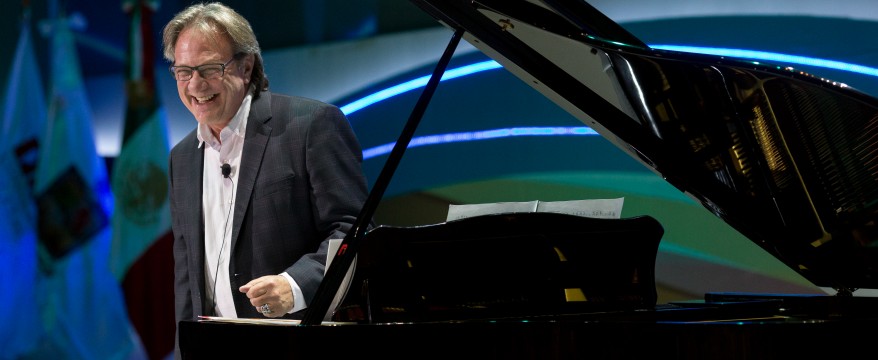Aaron’s Story on Stage
INSTALLMENT 2 of 3:
INDUSTRY IS BOOMING in Monterrey. Just 200 km from Texas, the city churns out automobiles and washers and dryers for export. Not far from the cobbled streets of the downtown area is the impressive Parque Fundidora, 142 hectares of museums, children’s playgrounds, ponds, running areas, and sports fields. (The name, “fundidora,” comes from the massive steel foundry that has been brilliantly converted into a museum of Science and Technology).
The park is also home to the enormous conference hall where the Worldwide Meeting on Human Values convened to a packed crowd on the morning of October 23rd. College kids in sneakers, bureaucrats in suits, business leaders and NGO workers buzzed with excitement. Most seemed to be from Monterrey, or nearby.
Everyone listened with rapt attention as the speakers took the stage to share their thoughts on climate justice, on a new movement toward compassionate cities, even on the Mexican national anthem, a battle march in need of revision, according to the new governor of Nuevo Leon, Jaime Rodríguez Calderón.
After lunch, following a fascinating performance by a classical pianist who lived among the Tarahumara in the remote cliffs of Northern Mexico, Academy Founder and President Aaron Stern came on stage for his keynote. Almost at once, he took his seat at the piano, and shared with the audience a piece that his mentor and dear friend, Leonard Bernstein, had written for Aaron as a birthday gift. The audience listened intently. (Apparently, Bernstein is as famous in Mexico as in the US, if not more so.) In a soft but clear tone, simultaneously translated to the audience, Aaron brought our attention to the discordance and resolution of the music. Seamlessly, he wound his way to the subject of human values.
“Human values are not a list that we must refer to, a list somewhere outside ourselves,” he said. “They’re inside us. If we can find out how to come into contact with them, the values are already inside us.”
Then he stood to share the Academy’s Learning Model with the crowd. I was struck by the significance of the moment: Here was the same chart that we have shared with small groups of teachers, with teaching artists and elders and children, almost always in the intimacy of our meeting rooms in the Academy. Tens of thousands of people were now looking at it, studying it, perhaps rethinking their old theories about how people learn. They were asking, perhaps, “What is it, really, that lives inside me? What happens when I pay attention to my own longings, my own curiosities—and then tiptoe into other theories?” What happens, Aaron asked, when we really activate our natural love of learning?
I found myself staring at the learning model chart as if through the eyes of the thousands of people around me, almost as if I were seeing it for the first time. Here was the essence of the Academy for the Love of Learning writ larger than life, on an international stage.
Watch Aaron’s keynote at the Seventh Annual Worldwide Meeting on Human Values:
[NEXT INSTALLMENT: La Experiencia Impulsa]


